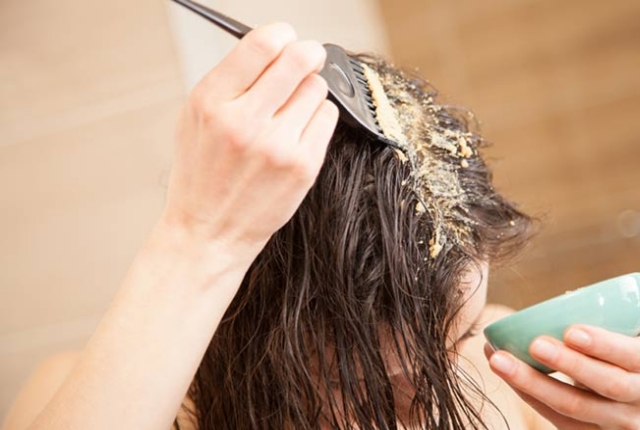
Think of hair treatment masks as a kind of high-powered hair conditioner. They have similar benefits—like deeply nourishing and strengthening hair—but are more intense and powerful. Hair masks can also target specific hair concerns. Want to find out what hair conditioning masks are all about and how to use them? Incorporate them into your hair care routine and you may find that the results (think softer, stronger and shinier looking hair) are worth the extra time.
What are hair masks ?
Hair masks are treatments that are formulated with oils, butters and other nourishing ingredients. These hydrating hair masks spend more time sinking into and nurturing hair than your average shampoo or conditioner, giving dramatic benefits in a single use.
We put our hair through a lot of stress, whether it’s from heat styling, new hairstyles or exposure to the elements. That can cause serious hair damage. Hair treatment masks can help reduce hair breakage and make your hair feel healthy—all in the comfort of your own home.
How to use a hair mask

Hair masks are easy to work into your hair care routine, since they usually take the place of your conditioner. Here’s how to use a hair mask:
- Step 1: Shampoo your hair, then rinse.
- Step 2: Apply your hair mask.
- Step 3: Wait three to five minutes. (Pro tip: Use your extra time in the shower to wash your face, shave your legs or use a body scrub.)
- Step 4: Rinse.
- Step 5: Towel dry and style your refreshed hair as you normally would.
How often should you wear a hair mask?
You should use a hydrating hair treatment mask at least once a week. But if your hair feels or look drier or more damaged than usual, increase to twice or three times a week.
How long should you leave a hair mask on?
You should leave a hair mask on your hair for at least three to five minutes, but if you’re working with rough or dehydrated hair and have the time, you can let it sink into damp hair for 15 to 20 minutes. If you’re working with already dry hair, you can leave it on overnight. (Dry hair is less porous than wet hair, so there’s less risk of it maxing out on moisture—which is possible if you leave it on too long.)
Can you leave a hair mask for a long time?
Short answer, it depends on the hair mask you’re using. If you apply your hair mask to damp hair—which is when the hair shaft is more porous, meaning it will absorb more of whatever you apply to it—you can have something called hygral fatigue.
That means the hair has stretched and contracted with the addition of moisture, to the point that it becomes weak and prone to breakage. (Think of it like a hair tie that’s been stretched out repeatedly.)
Leaving a hair mask on too long or even overnight, particularly on damp hair, can deliver too much moisture, which is what contributes to this. But the fix is easy: Just rinse your hair mask out after five minutes or as directed.
Why should you use a hair mask?
A deeply nourishing hair treatment mask can make a big difference in the shine and strength of your hair. And it’s particularly important if you have dry, damaged, frizzy or very long hair.
Plus, the best hair masks tend to be packed with hydrating and restorative ingredients. And they can target your specific hair type and concerns, too.
For instance, the best masks for dry hair are usually formulated with butters and oils such as shea, coconut oil, argan oil and avocado oil which can help replenish hair and add shine. You can similarly find botanical oils, including avocado oil, in the best hair masks for curly hair. (Try the Smoothing Treat 1 Minute Hair Mask + Avocado Extract, which softens curls and fight frizz without weighing hair down.)
Other naturally healing ingredients, such as honey and propolis, are essential to get in the best hair masks for damaged hair. By using hair masks with these natural ingredients, you can bring out the best in your hair.

